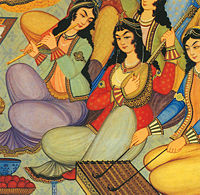What, When, Where, How, Who?
Arts
Introduction, Important Definitions and Related Concepts:
The arts is a broad subdivision of culture, composed of many expressive disciplines. In modern usage, it is a term broader than "art", which usually means the visual arts (comprising both fine art, decorative art, and crafts). The arts encompasses visual arts, performing arts, language arts, culinary arts, and physical arts.[citation needed] Many artistic disciplines involve aspects of the various arts, so the definitions of these terms overlap to some degree. Culture (from the Latin cultura stemming from colere, meaning "to cultivate,")[1] generally refers to patterns of human activity and the symbolic structures that give such activities significance and importance. Cultures can be "understood as systems of symbols and meanings that even their creators contest, that lack fixed boundaries, that are constantly in flux, and that interact and compete with one another"[2] Different definitions of "culture" reflect different theoretical bases for understanding, or criteria for evaluating, human activity. Culture is manifested in music, literature, lifestyle, painting and sculpture, theater and film and similar things.[3] Although some people identify culture in terms of consumption and consumer goods (as in high culture, low culture, folk culture, or popular culture),[4] anthropologists understand "culture" to refer not only to consumption goods, but to the general processes which produce such goods and give them meaning, and to the social relationships and practices in which such objects and processes become embedded. For them, culture thus includes art, science, as well as moral systems. Cultural Anthropologists most commonly use the term "culture" to refer to the universal human capacity and activities to classify, codify and communicate their experiences symbolically. This capacity has long been taken as a defining feature of humans. (although some primatologists have identified aspects of culture among humankind's closest relatives in the animal kingdom).[5]
